Blood & Plunder: Going Native
 By Mitch Reed
By Mitch Reed
Native forces have been in Blood & Plunder since its inception and recent books from Firelock Games such as Fire on the Frontier and Raise the Black have expanded their footprint in the game and their presence is now being seen on more game tables.
One of the things I love about the models for Blood & Plunder is how you can use your models in many different lists and factions, which allows you to experience the many different flavors in the world of Blood & Plunder. The native forces in the game went against this since they are limited to specific native units. In my first few years in play Blood & Plunder I never played any lists that used them, however once I did I saw how much capability they gave for my forces.
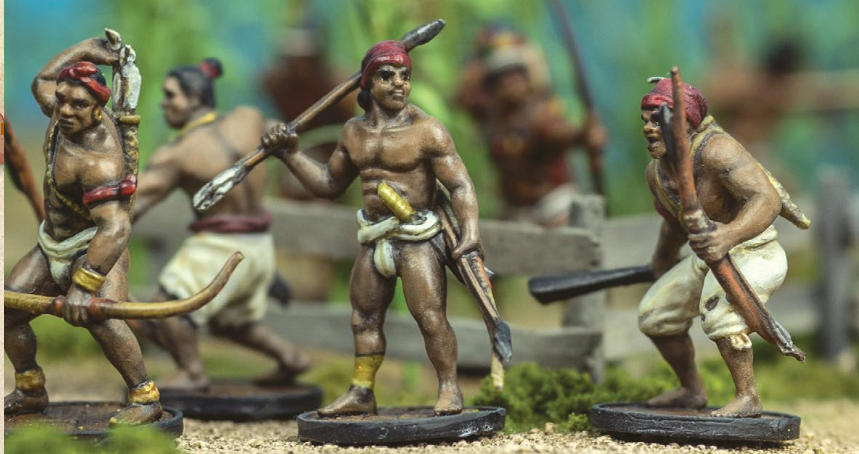
One of my favorite forces is the French Canadian Militia, which has one of my favorite units in the game, the Coureur Des Bois. This unit can shoot and melee well and they get the Scouts, Marksmen, and Elusive traits. These factors make this unit a great option since they do a lot well.
This unit also allows you to take many native units as both core and support options and the Warrior Musketeers became my first native unit I used in a game. The Warrior Musketeers can shoot and melee very well and have the Evade, Hidden and Scouts traits which are great.
They also get the Slow Reload trait, which means they have to take three actions to reload their weapons vice two that most other units have. Despite this negative trait pairing up the Coureur Des Bois and Warrior Musketeers as the foundation for your force gives you a unit that fights like skirmishers or light infantry that can take advantage of terrain.
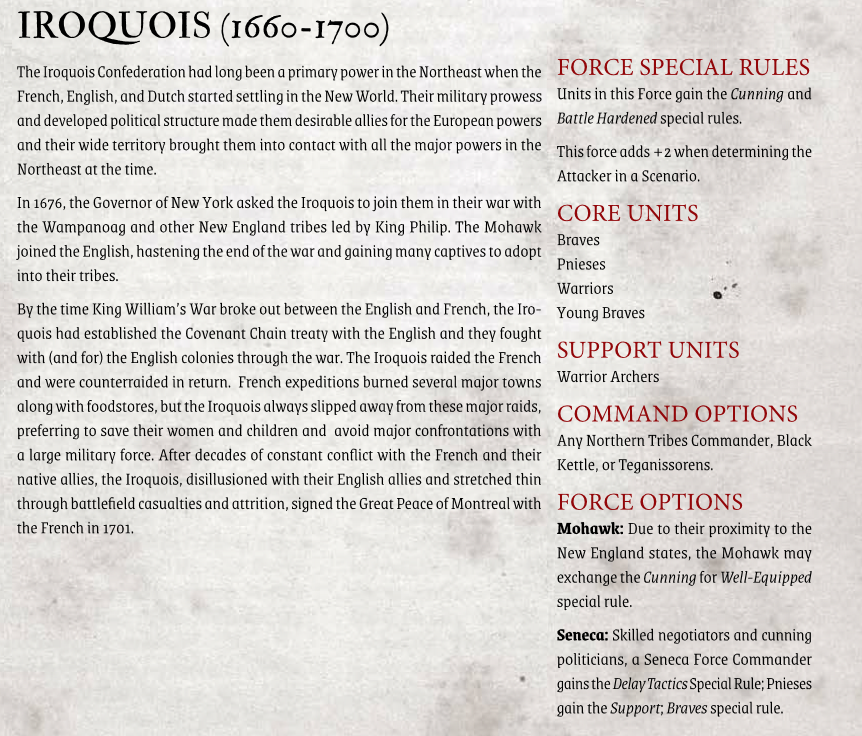
This force also allows you to take Warriors and Young warriors as support units that are some very versatile units that can fight very well and melee and never underestimate the utility of their bows to give an opponent pain at range.
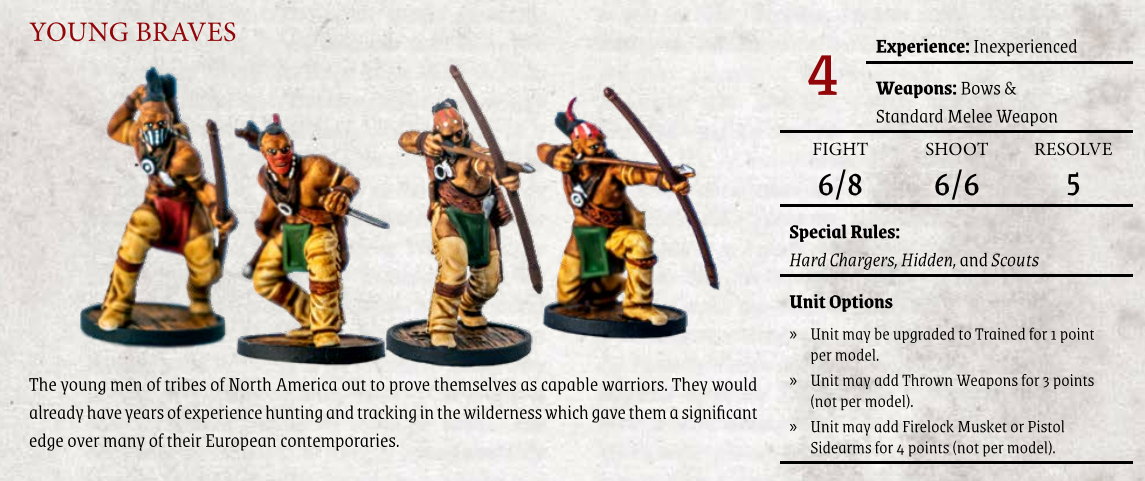
My experience with the Warriors with the French-Canadian Militia made them a steady selection for lists that featured them from that point onwards. While they have some drawbacks as most units do, they add so much for a player that wants to fight aggressively and yet still have some advantages when you have to defend.
While my favorite list is from the No peace Beyond the Line book, the Fire on the Frontier and Raise the Black additions makes a native force a great option for gamers. These later books make fielding a native force an amazing option for many gamers.
Some may ask if such a list is viable in competitive play and the answer is a resounding “yes”. One of the first ever Blood & Plunder tournaments we ran at NoDiceNoGlory.com was at Historicon 2019 and the overall winner was a native force taken from the first Blood & Plunder book. The games were not even close and many of the players bought the native box set from the Firelock Games booth.
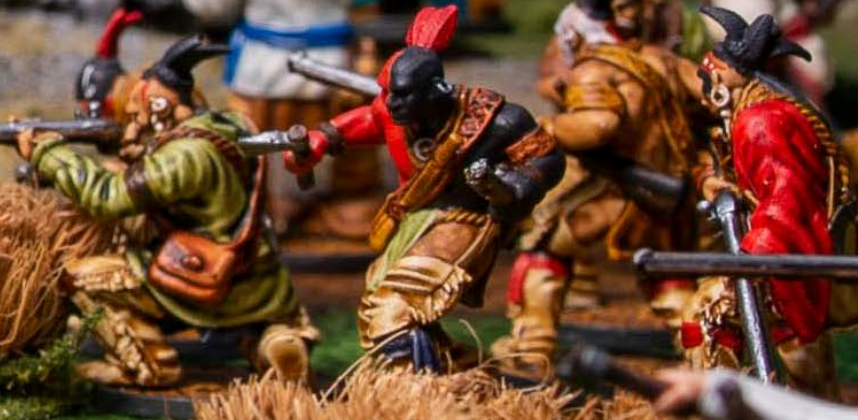
One of the native lists I have built is the Iroquois from the Fire on the Frontier book. This force is built for aggressive players, and they have a special rule that gives them a bonus when determining who the attacker is in a scenario. The list features the Braves, which are armed with muskets and do not have the negative Slow Reload trait. They also shoot and melee very well and are the bedrock of my Iroquois force.
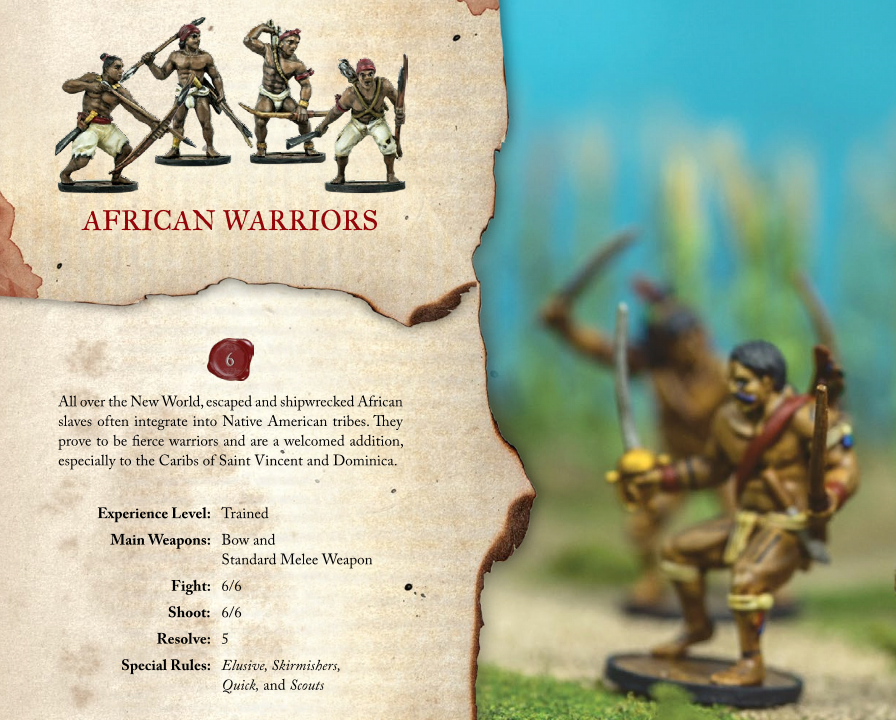
One aspect of the native factions that should not be overlooked is the detailed history behind these lists. One thing that the developers at Firelock Games excel at is providing the gaming community with not only a great and diverse game, but also gives players the rich history behind these forces that educates us as to the role they played in the Americas.
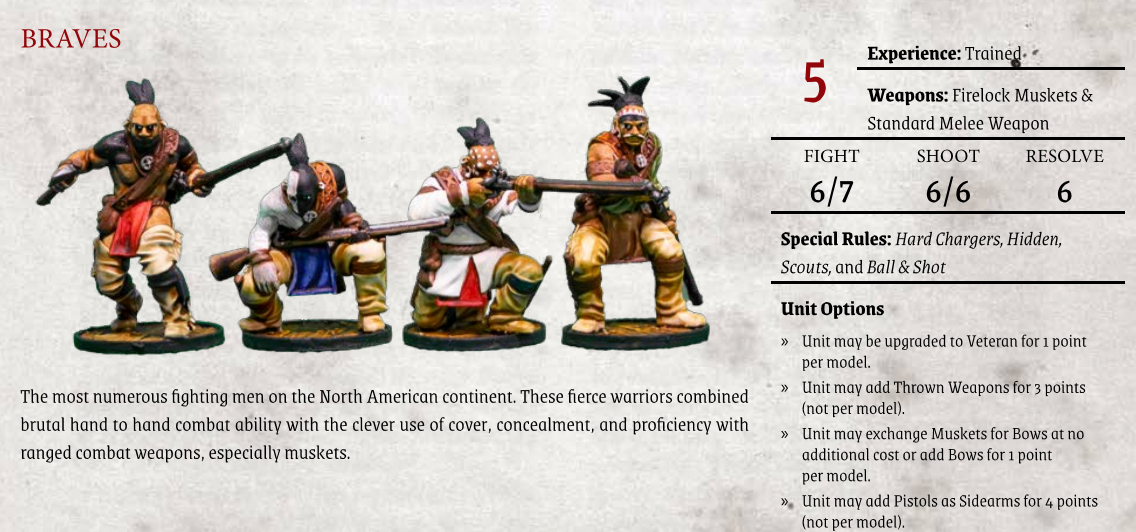
I hope this article convinces you to expand your collection and gets you motivated to play one of the many excellent native factions in Blood & Plunder. They are very fun to play, and I know you will have a lot of luck on the game table with them.

What list from the natives is the most competitive?